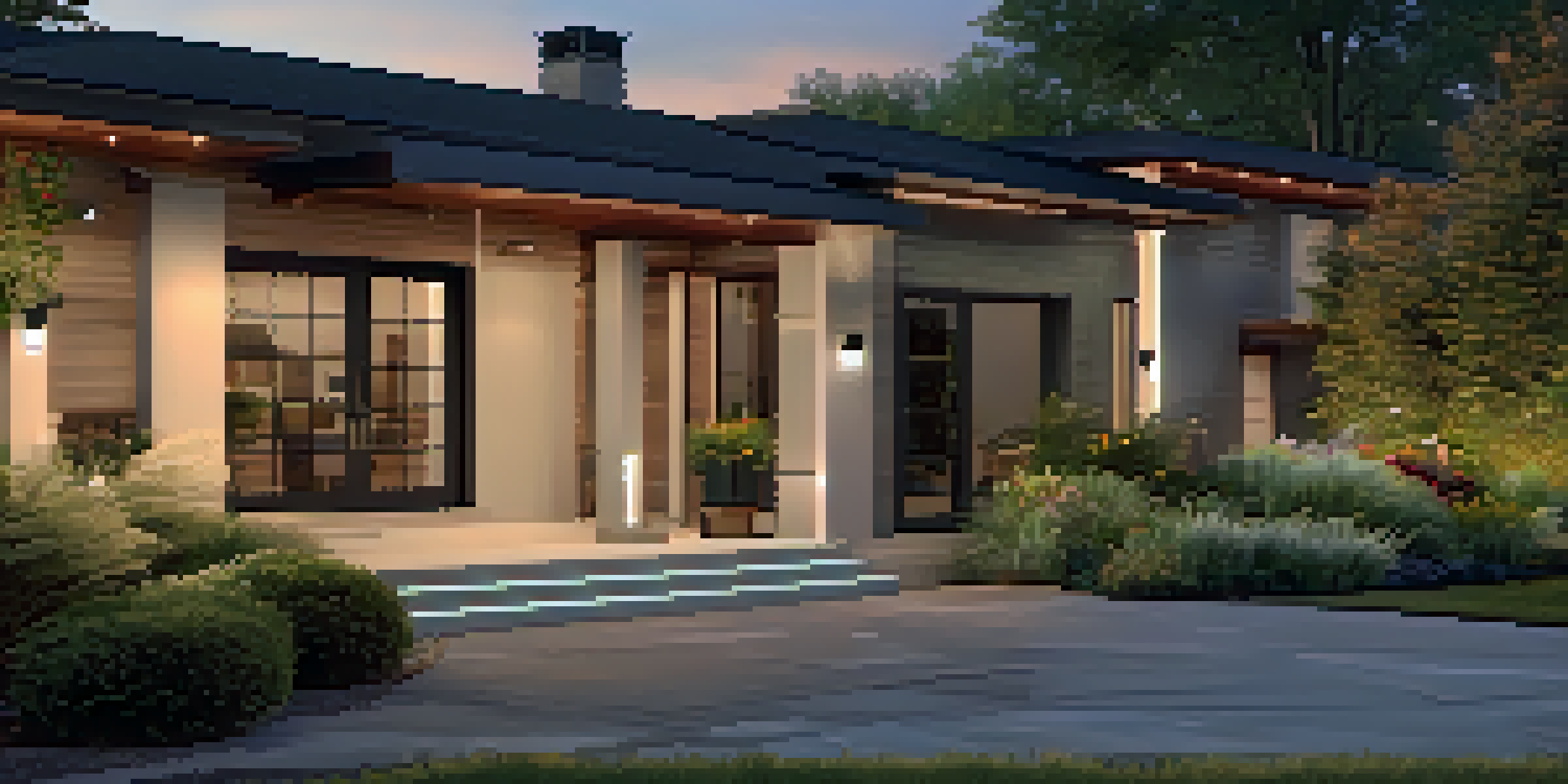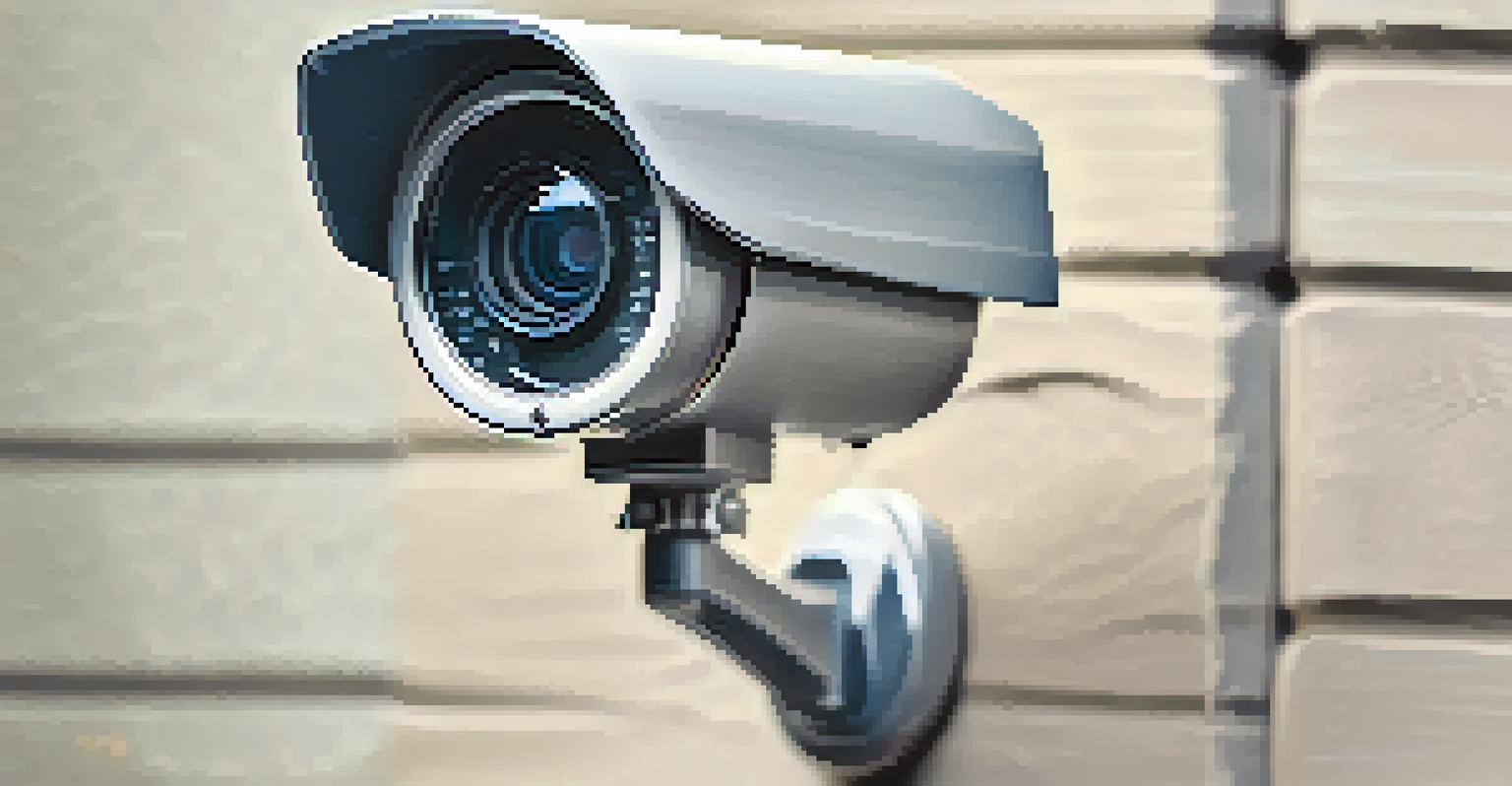Installing Security Cameras: A Guide for Homeowners

Why You Need Security Cameras for Your Home
In today's world, ensuring the safety of your home is more important than ever. Security cameras act as a deterrent to potential intruders and provide peace of mind for homeowners. With the rise in technology, these cameras not only help in monitoring your property but also allow you to keep an eye on your loved ones.
The best way to predict the future is to create it.
Imagine being able to check in on your home or kids while you're at work or on vacation. Security cameras can do just that, sending alerts to your phone and allowing you to view live feeds anytime, anywhere. This added layer of security can significantly reduce the chances of burglary and vandalism.
Moreover, having recorded footage can be invaluable if something does happen. Whether it’s a break-in or a delivery mix-up, having that video evidence can assist law enforcement and insurance claims, making it a wise investment for any homeowner.
Choosing the Right Type of Security Camera
Not all security cameras are created equal, and selecting the right type is crucial for your needs. You can choose between wired and wireless cameras, each with its own pros and cons. Wired cameras generally offer reliable connectivity, while wireless cameras are easier to install and can be placed in more locations.

Additionally, consider whether you need indoor or outdoor cameras. Outdoor cameras are designed to withstand the elements and often include features like night vision and motion detection. In contrast, indoor cameras focus on monitoring activities within your home, providing a different set of functionalities.
Security Cameras Enhance Safety
Installing security cameras provides peace of mind by deterring intruders and allowing homeowners to monitor their property remotely.
Lastly, think about the resolution and field of view. Higher resolution cameras provide clearer images, while a wider field of view can cover more area. Finding the balance between these factors will help ensure your home's security needs are met effectively.
Planning the Installation: Key Considerations
Before jumping into the installation process, take a moment to plan where your cameras will go. Consider entry points like doors and windows, as well as common areas that may need monitoring. A well-thought-out camera placement can maximize coverage and minimize blind spots.
Security is not a product, but a process.
It's also essential to think about power sources and connectivity. Will you need to run wires, or can you rely on battery power? Understanding the logistics of your installation can save you time and frustration in the long run.
Lastly, don’t forget about privacy concerns. Be mindful of placing cameras where they could invade the privacy of neighbors or visitors. Clear communication about your security measures can help maintain good relationships while keeping your home safe.
Tools and Equipment Needed for Installation
When it comes to installing security cameras, having the right tools is essential. Basic tools such as a drill, screwdriver, and ladder will be needed to mount cameras securely. Additionally, a stud finder can help locate the best spots for mounting, ensuring stability.
If you're installing wired cameras, consider having cable clips or conduits to keep the wires tidy and protected. For wireless setups, ensure you have a strong Wi-Fi connection where the cameras will be placed. A good Wi-Fi extender may be necessary if your signal is weak in certain areas of your home.
Choose the Right Camera Type
Selecting between wired and wireless cameras, as well as indoor and outdoor options, is crucial to meet your specific security needs.
Finally, don't overlook the importance of a good quality power supply. Whether you're using batteries or plugging in, ensuring your cameras have a consistent power source is crucial for continuous monitoring.
Step-by-Step Guide to Installing Your Cameras
Now that you have your tools and plan in place, let's dive into the installation process. Start by marking the locations where your cameras will be mounted. Use a level to ensure they are installed straight, as crooked cameras can affect the quality of the footage.
Next, if you're working with wired cameras, drill holes for the cables and mount the camera brackets securely. For wireless cameras, simply follow the manufacturer's instructions for mounting, and ensure they’re positioned to capture the desired view.
Once the cameras are mounted, it's time to connect them to your power source and Wi-Fi. Follow the setup instructions provided by the manufacturer, and make sure to test each camera to confirm they are functioning correctly before you finish the installation.
Configuring Your Security Camera System
After installation, configuring your security camera system is the next step. This often involves downloading an app or software provided by the manufacturer, which helps you manage and monitor your cameras. Make sure to set up notifications for motion detection so you can stay informed about any activity.
Additionally, customize your camera settings to suit your needs. Adjust the motion sensitivity and recording schedule to avoid unnecessary alerts. Some systems even allow for facial recognition or specific zone monitoring, enhancing your security further.
Regular Maintenance is Essential
Ongoing maintenance, including checking camera lenses and reviewing footage, is vital to ensure your security system operates effectively.
Lastly, don't forget to regularly check for software updates. Keeping your camera system updated ensures you have the latest features and security enhancements, protecting your home more effectively.
Maintaining Your Security Camera System
Once your security cameras are up and running, regular maintenance is key to ensuring they operate effectively. Periodically check the camera lenses for dirt or obstructions that could affect image quality. A simple wipe with a soft cloth can often do the trick.
Also, take the time to review your footage regularly. This helps you stay aware of any unusual activity around your home and allows you to adjust camera angles if necessary. If you're using a cloud storage solution, make sure you have enough space to store important footage.

Lastly, consider performing a full system check every few months. This includes testing all cameras, reviewing settings, and ensuring all software is up-to-date. Regular maintenance not only prolongs the life of your system but also keeps your home as secure as possible.